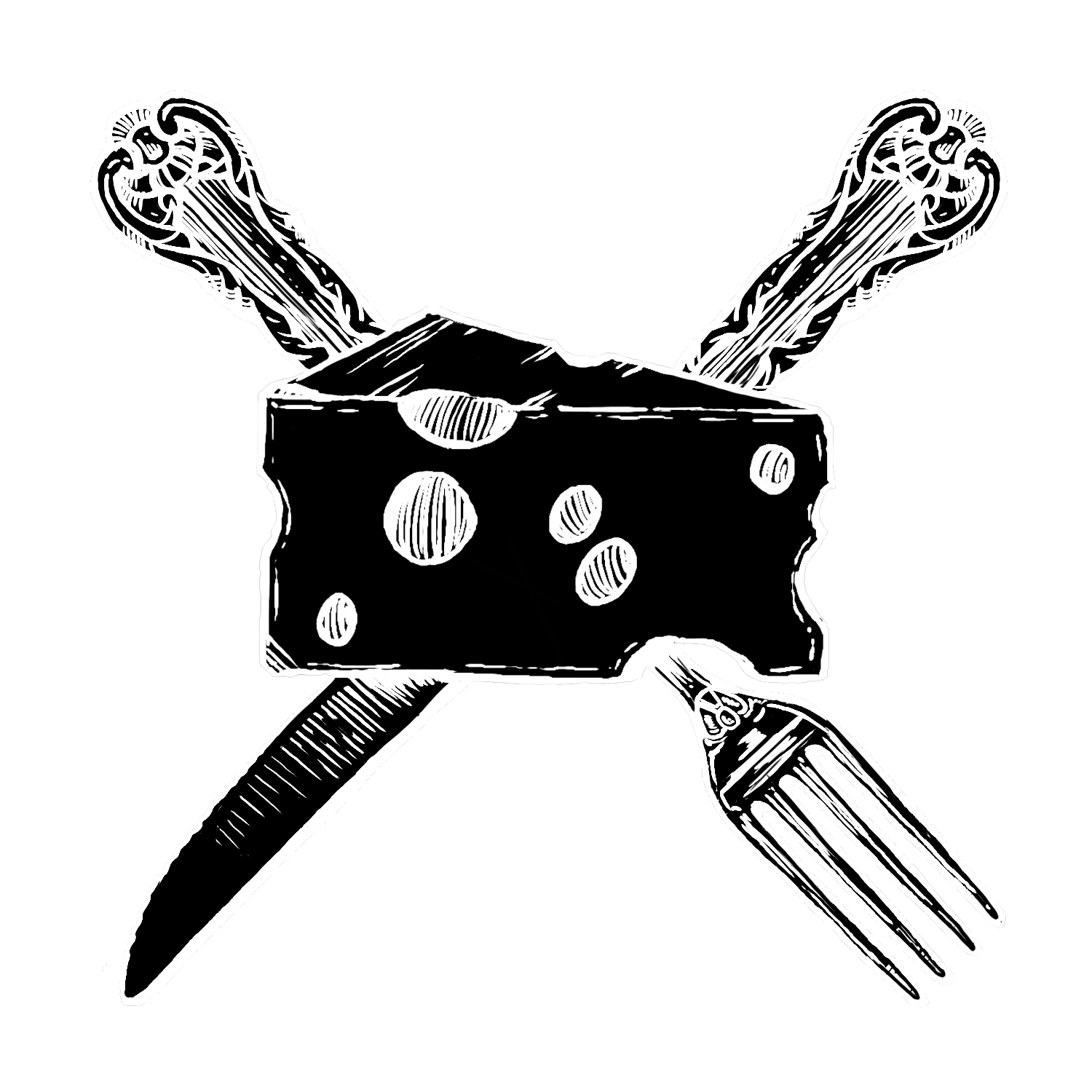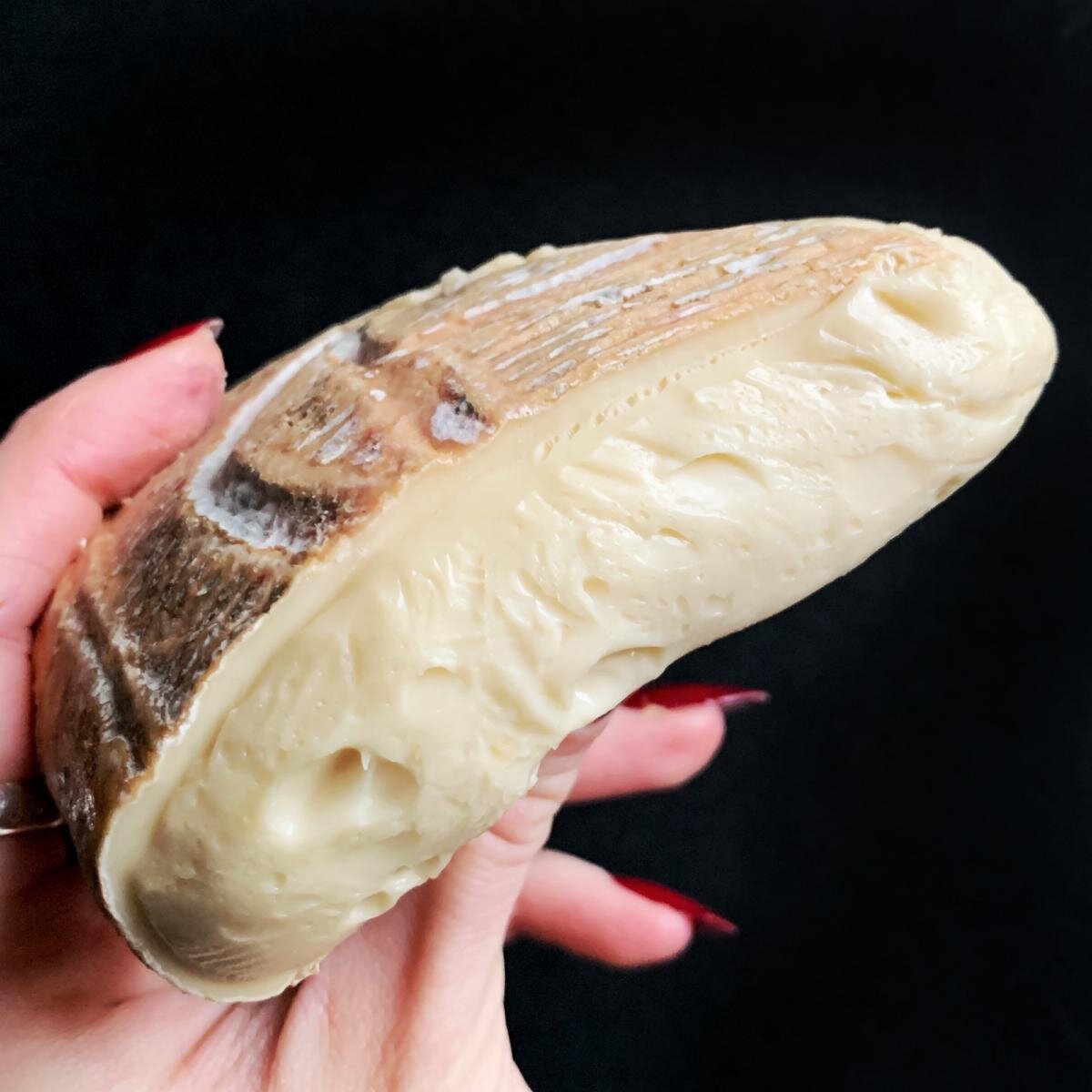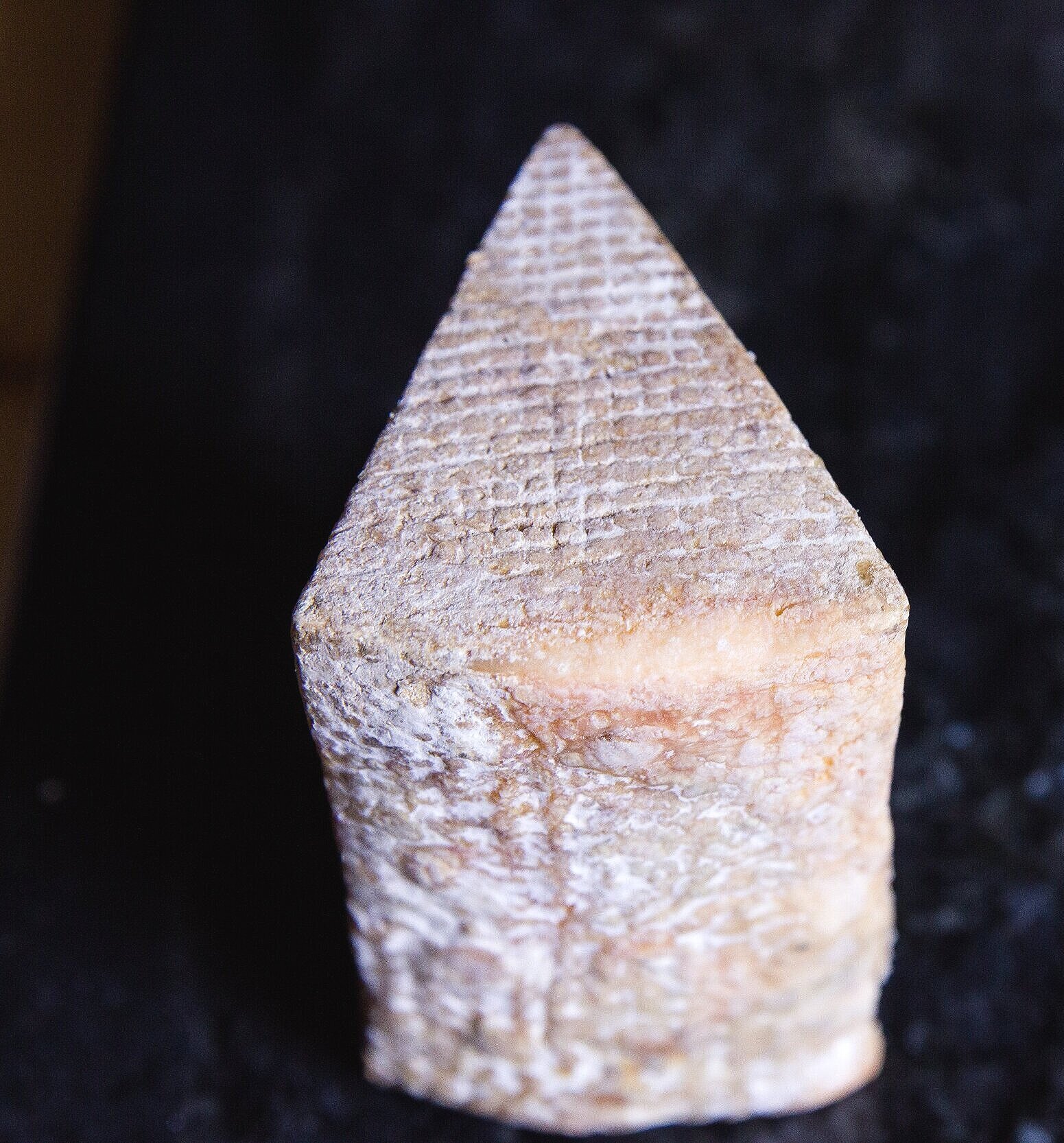What is this shit all up on my cheese? And…can I eat it?
That powdery, funky stuff on the outside of your cheese is called a rind and it’s basically the cheese’s skin. Cheese rinds form during the aging process and there are three types: bloomy, washed, and natural rinds. OK, enough with the fancy talk. Are you supposed to eat that stuff or nah?
There’s really no “supposed to” here; it all depends on your preferences. Unless the cheese is coated with an inedible substance like wax, rinds are totally safe to eat – but that doesn’t mean everyone likes them. Personally, I’m a devoted member of the rind eaters club. I love the peppery notes of a bloomy rind on a lightly aged goat cheese and cave-y funk of an earthy stilton. If you’ve never indulged in the pleasures of rind-eating I challenge you to one of each type listed below. Maybe you won’t like them, and that’s OK. But you might find yourself in the throes of a new love affair.
Types of Cheese Rinds
1.The Bloomy Rind: Fluffy, white and soft to the touch
That marshmallowy white stuff on the outside of your brie is called a bloomy rind. These cheeses are coated with edible molds, such as Penicillium candidum. The cheeses ripen from the outside-inwards. Sometimes, a seductive gooey layer called the “creamline” forms around the fudgy interior.
Examples: Camembert (pictured) , Brie de Meaux, Bonne Bouche
Flavor Notes: fresh pepper, baking bread, mushrooms, earth
2. The Washed Rind: Orange and Sticky with a lingering Stank
Ever smell a cheese that tastes like sweaty gym socks? That was probably a washed rind cheese. Those orange and red-hued cheeses usually taste much tamer than they smell. These stinkers start as bloomy rind cheeses and are then washed in brine, alcohol, or both to encourage the growth of a bacteria called B. Linens. These rinds may be sticky and sometimes even crunchy. They’re too strong for some and irresistible for others. Either way, they’re always a great conversation starter.
Examples: Taleggio (pictured), Époisse, Gruyere
Flavor notes: beef stock, onions, stinky feet
3..
THE NATURAL RIND: CRAGGY
Left to their own devices, cheese naturally forms a rind as a way to protect itself. Salting and air circulation draw moisture out of the surface of the wheel forming a dry, thin crust. These rinds are sometimes coated with cloth or wax but they can also be rubbed with oils, spices, and flavorings like paprika. Natural rinds on young cheeses, like the Bayley Hazen Blue pictured, are delicious and musty, a taste that has the power to transport you into the cave in which it was aged. The rinds on older cheeses like Parmigiano are very waxy and unpalatable, but make great broth and dog chew toys.
Examples: Comté, Stilton, Mimolette
Flavor Notes: caves, forest moss, barnyard
4. Some Cheeses Don’t Have Rinds
These cheeses are basically naked and they taste the same on the outside as they do on the inside. Rindless cheeses include fresh ones that aren’t old enough to form a rind, like mozzarella, and those aged in vacuum-sealed plastic, like block cheddar.
Examples: Burrata, Feta, SarVeccio Parmesan (pictured)
Flavor Notes: tastes the same as the paste




